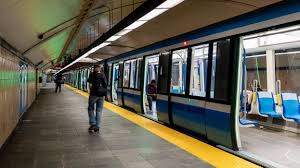The GO Train: An Integral Part of Ontario’s Public Transit

Introduction
The GO Train service has become a vital component of Ontario’s public transportation system, facilitating the daily commute for thousands of residents across the Greater Toronto and Hamilton Area (GTHA). With the increasing population and growing emphasis on sustainable travel, the relevance of the GO Train is ever more pronounced as it offers an efficient alternative to road travel, thereby reducing traffic congestion and environmental impact.
Current Developments
As of October 2023, the GO Train service is expanding its reach and improving its frequency. Metrolinx, the body responsible for GO services, has announced the introduction of new routes and increased service hours, aiming for better connectivity between urban centers and surrounding communities. The latest data reports that ridership has risen by 15% since the inception of the new schedule, reflecting the public’s growing reliance on this transit option. Additionally, Metrolinx is investing in upgrading stations and purchasing new trains to enhance the customer experience, making it more comfortable and reliable.
Environmental and Economic Benefits
The transition to an increased GO Train service not only caters to the need for a reliable commuting option but also addresses environmental concerns. Trains are a cleaner alternative to cars, producing significantly lower greenhouse gas emissions per passenger mile. As Ontario aims to meet its environmental goals, expanding GO Train services aligns with provincial initiatives to promote public transit usage and reduce the carbon footprint.
Challenges Ahead
While the expansion of GO Train services represents progress, several challenges remain. Increasing demand has resulted in overcrowded trains during peak hours, leading to discussions about capacity and infrastructure limitations. Metrolinx is actively addressing these issues, considering new train purchases and enhanced scheduling techniques to alleviate congestion. Furthermore, the ongoing impacts of global supply chain disruptions have posed challenges in acquiring new rail cars and equipment within expected timelines.
Conclusion
The GO Train service is a crucial infrastructure element in Ontario’s public transit landscape, and its enhancements are a positive step towards sustainable urban mobility. As ridership continues to grow, the focus on improving services ensures that the GO Train remains an appealing choice for commuters. Looking ahead, continued investment and innovation in this transit service will be essential in keeping pace with the needs of an evolving population, ultimately contributing to a greener, more connected Ontario.









